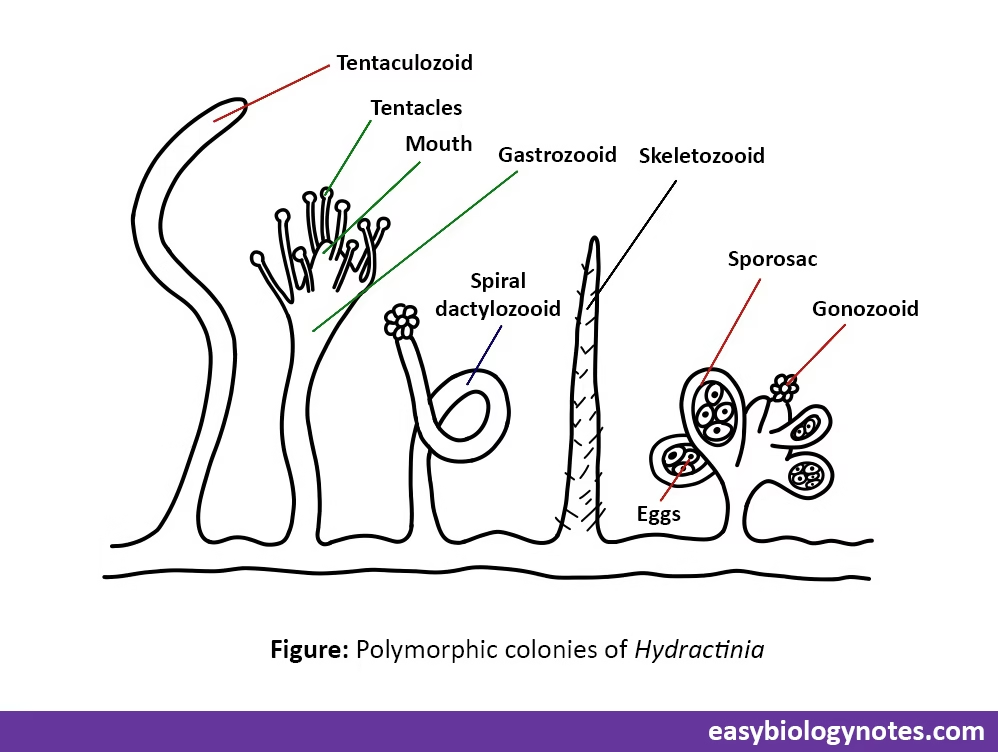Polymorphism in Coelenterates
- Occurrence of more than one type of individuals in the same species, which differ in form and function, is known as polymorphism. (Gr., polys = many ; morphe = form)
- Two basic forms: There occur two main types of individuals or zooids – polyps and medusa.
Asexual sessile zooid is called polyp.
Sexual, free-swimming zooid is called medusa.
Importance of Polymorphism in Coelenterates
- Polymorphism is essentially a phenomenon of division of labour.
Different functions are assigned to different individuals, rather than to parts or organs of one individual. - Thus polyps are concerned with feeding, protection and asexual reproduction, while medusae are concerned with sexual reproduction.
Patterns of Polymorphism in Coelenterates
Degree of polymorphism varies greatly in different groups of Hydrozoa (or Coelenterates).
a) Dimorphic
- Simplest and commonest pattern of polymorphism is exhibited by many hydrozoans colonies like Obelia, etc.
- They have only two types of zooids:
– Gastrozooids or hydranths
– Gonazooids or blastostyles - Gastrozooids (or hydranths) are concerned with feeding, while gonazooids (or blastostyles) with asexual budding forming sexual medusae or gonophores.
- Such colonies, bearing only two types of individuals are called dimorphic, and the phenomenon is termed as dimorphism.
a) Trimorphic
- Some forms like Plumularia are trimorphic.
- Besides gastrozooids and gonozooids, they also possess a third type of individuals, the dactylozooids.
These are functionally non-feeding and defensive polyps bearing batteries of nematocysts.
b) Polymorphic
- Coelenterates having more than three types of individuals are called polymorphic.
- A somewhat greater degree of polymorphism is found in the encrusting colony of Hydractinia with five types of polyps, each performing specialized function.
These are:
- Gastrozooids for feeding
- Spiral dactylozooids for protection
- Long sensory tentaculozooids with sensory cells
- Skeletozooids as spiny projections of chitin
- Gonozooids or reproductive individuals, bearing male or female gonophores (sporosacs) or medusae for sexual reproduction.
